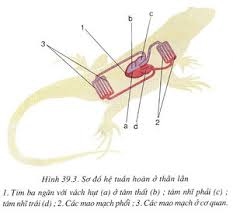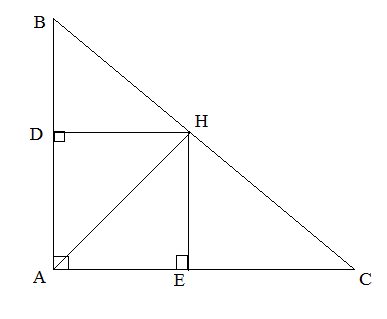Em hãy viết một đoạn văn khoảng 150 từ giới thiệu sơ lược một số thông tin về thân thế và quá trình hoạt động tìm đường cứu nước của chủ tịch Hồ Chí Minh?
1. Em hãy viết một đoạn văn khoảng 150 từ giới thiệu sơ lược một số thông tin về thân thế và quá trình hoạt động tìm đường cứu nước của chủ tịch Hồ Chí Minh. ( Bằng tiếng Anh ) 2. Nêu hiểu biết của em về Võ Nguyên Giáp ( Bằng tiếng Anh ) - Giúp tớ với cc ơii, chiều mai tớ thi rồi =((
Trả lời (1)
-
2. Mik giúp nè:
General Vo Nguyen Giap has the birth name Vo Giap, alias: Van. Born on 25/8/1911 in Loc Thuy Commune, Le Thuy District, Quang Binh Province.
From 1925 to 1926, he joined the student movement in Hue. In 1927, he joined the revolutionary Tan Viet Party (a precursor of the Indochinese Communist Party, now the Communist Party of Vietnam).
In 1930, he was arrested by the enemy and sentenced to two years in prison. After leaving prison, he continued his propaganda activities, causing revolutionary foundation in youth, students. In 1936, he was active in the semi-legitimate democracy movement of the Party in Hanoi; Is the editor of the Communist Party's newspapers: "Our Voice," "Forward," "Gathering," "Times," and "News." As Chairman of the Tonkin Press Committee.
In June 1940, he was admitted to the Indochinese Communist Party and sent to China to meet with leader Nguyen Ai Quoc.
At the beginning of 1941, he returned to Vietnam, taking part in the preparation of the armed uprising in Cao-Bắc-Lang.
In December 1944, comrade Nguyen Ai Quoc was tasked with setting up the Vietnamese Liberation Army.
In April 1945, at the Tonkin Military Conference, he was sent to the Tonkin Military Commission. From May 1945, he was the Commander of the new revolutionary armed forces, united in Vietnam liberation troops. In June 1945, comrade Nguyen Ai Quoc assigned the task of establishing provisional committee of Liberation Zone.
In August 1945, he was appointed to the Central Committee of the Party and the National Committee for Coma. At the National People's Congress of Tan Tao, he was elected to the National Committee for Liberation of Vietnam; Is the Minister of the Interior in the Provisional Government of the Democratic Republic of Vietnam and is added to the Standing Committee of the Party Central Committee.
In March 1946, he was Chairman of the Military, Member of the Government of the Union; Upon the establishment of the Central Military Commission, he was appointed Secretary of the Central Military Commission. In October 1946, as Minister of Defense, President Ho Chi Minh was authorized as Commander-in-Chief of the Vietnam People's Army and Self-Defense Forces. In January 1948, he was promoted general, general commander of the People's Army of Vietnam.
In February 1951, at the second National Party Congress, he was elected member of the Central Committee of the Communist Party and was elected by the Central Committee to the Politburo.
From September 1955 to December 1979, he was Deputy Prime Minister, Minister of Defense.
In September 1960, at the Third Party Congress of the Communist Party, he was re-elected to the Central Committee, elected by the Central Committee on the Politburo.
In December 1976, at the 4th Party Congress of the Communist Party, he was re-elected to the Central Committee, elected by the Central Committee on the Politburo.
At the 5th and 6th National Party Congress, he was re-elected to the Central Committee.
From January 1980, he was a permanent deputy prime minister; From April 1981 to December 1986, he served as Vice Chairman of the Council of Ministers (now Deputy Prime Minister).
He was consistently elected as Member of the National Assembly from I to VII.
Due to great contribution to the revolutionary cause of the Party and people, great prestige inside and outside the country, General Vo Nguyen Giap was awarded the Gold Medal Order by the Party and the State, Ho Chi Minh Order , The badge of the 70-year-old Party and many other noble and noble medals of Vietnam and the world.CHÚC BN HỌC TỐT!!!
Thông cảm nếu bài mik sai vì mik chỉ mới học lớp 6!!! :(( :(( :((



Còn nếu bài mik đúng thì nhớ tick mik để mik lấy SP nha!!! =)) =)) =))


 bởi Đặng Thị Minh Tâm
bởi Đặng Thị Minh Tâm 30/12/2019
Like (0) Báo cáo sai phạm
30/12/2019
Like (0) Báo cáo sai phạm
Nếu bạn hỏi, bạn chỉ thu về một câu trả lời.
Nhưng khi bạn suy nghĩ trả lời, bạn sẽ thu về gấp bội!

Lưu ý: Các trường hợp cố tình spam câu trả lời hoặc bị báo xấu trên 5 lần sẽ bị khóa tài khoản
Các câu hỏi mới
-
Once being a basic food of farmers and poor families in Vietnam, com tam or broken rice is now a favourite dish of most Vietnamese. It is said that the best broken rice can be found in Saigon. When you come to Saigon, you should try this dish at least one time and you will not regret it.
Com tam literally means broken rice. Broken rice originally consisted of grains which were broken during the harvesting and cleaning of rice. In the past, as most people preferred to eat the long, whole grain rice, broken rice grains were difficult to sell and usually eaten by the Vietnamese working class because of the cheap price. Nowadays, often favored over long grain rice for its unique flavour and texture, broken rice is one of the best-loved fares in Vietnam.
Local broken rice eateries can practically be found on every street in Saigon. A broken rice dish is served with many beautiful colours from grilled pork chop with multi-flavour to steamed egg, shredded pork skin, pickles, vegetables such as tomatoes, cucumbers ... and especially sweet fish sauce that is the spirit of the dish.
1. Today, com tamis only eaten by poor Vietnamese.
2. Com tamis made from broken rice grains.
3. In the past, most people didn’t eat broken rice grains because they were cheap.
4. It is difficult to find a place to eat com tam in Saigon.
5. The most important part of com tamis sweet fish sauce.
6. Com tamis now a favourite dish of Vietnamese people, especially Saigonese.
23/11/2022 | 1 Trả lời
-
Egg coffee, called Cà Phê Trứng in Vietnamese, was first invented by Nguyen Giang in 1946. There was a shortage of milk in Hanoi due to the French War. Mr. Nguyen reatively began adding whisked eggs to his coffee instead.
The original version was a bit, well, eggy. But over time the recipe was modified with the addition of sugar, condensed milk, and even Laughing Cow cheese. No one knows the recipe for sure since it’s a secret recipe. These days Egg Coffee is a staple of Hanoi coffee culture and a must-try while in Hanoi!
What does it taste like? Well it’s incredibly thick and rich and creamy. Closer to a dessert than a beverage. Liquid tiramisu is the most accurate description we’ve heard.
Nguyen Giang still has a café where you can try his famous recipe, or you can grab a cup of Egg Coffee at dozens of coffee shops all over Hanoi.
1. Who invented egg coffee?
2. Why did Nguyen Giang add whisked eggs to his coffee?
3. What is the recipe to make egg coffee nowadays?
4. What does egg coffee taste like?
5. Where can we buy this type of coffee?
24/11/2022 | 1 Trả lời
-
24/11/2022 | 1 Trả lời
-
23/11/2022 | 1 Trả lời
-
24/11/2022 | 1 Trả lời
-
23/11/2022 | 1 Trả lời
-
24/11/2022 | 1 Trả lời
-
24/11/2022 | 1 Trả lời
-
23/11/2022 | 1 Trả lời
-
24/11/2022 | 1 Trả lời
-
23/11/2022 | 1 Trả lời
-
23/11/2022 | 1 Trả lời
-
23/11/2022 | 1 Trả lời
-
23/11/2022 | 1 Trả lời
-
24/11/2022 | 1 Trả lời
-
24/11/2022 | 1 Trả lời
-
23/11/2022 | 1 Trả lời
-
24/11/2022 | 1 Trả lời
-
23/11/2022 | 1 Trả lời
-
Vietnamese food culture varies by regions from the north to the south. In Northern Vietnam, food is characterized by light and balanced. Northern Vietnam is seen to be the cradle of Vietnamese cuisine with many notable dishes like Pho, Bun Rieu, Bun Thang, Bun Cha, BanhCuon, etc. Then, food culture in Northern Vietnam became popular in Central and Southern Vietnam with suitable flavors in each regions.
The regional cuisine of Central Vietnam is famous for its spicy food. Hue cuisine is typical Central Vietnam’s food culture. Food in the region is often used with chili peppers and shrimp sauces, namely, Bun Bo Hue, BanhKhoai, BanhBeo, etc.
In Southern Vietnam, the warm weather and fertile soil create an ideal condition for planting a variety of fruit, vegetables and livestock. Thus, food in the region is often added with garlic, shallots and fresh herbs. Particularly, Southerners are favored of sugar; they add sugar in almost dishes. Some signature dishes from Southern Vietnam include BanhKhot and Bun Mam.
1. It is considered that Vietnamese cuisine __________.
A. originated from the North
B. became more and more popular
C. always combines taste and colour
D. can be found only in Northern Vietnam
2. What are the features of Northern Vietnamese food?
A. It’s delicious and healthy.
B. It’s sweet and sour.
C. It’s light and balanced.
D. It’s a bit fatty and salty.
3. Hue cuisine is notable for its __________.
A. colorful food
B. spicy taste
C. bitter taste
D. light flavor
4. In Southern Vietnam, __________.
A. the warm weather makes it hard to plant fruit and vegetables
B. fresh herbs are always used in cooking
C. people love sweet food
D. sugar is often added to dishes
5. Which of the followings is NOT true?
A. Food in Vietnam changes region to region.
B. Southerners do not like northern food due to its light flavor.
C. Chill peppers and shrimp sauces are among the frequently used ingredients.
D. Bun Bo Hue is a typical dish of the Central Vietnam cuisine.
23/11/2022 | 1 Trả lời
-
24/11/2022 | 1 Trả lời
-
24/11/2022 | 1 Trả lời
-
23/11/2022 | 1 Trả lời
-
23/11/2022 | 1 Trả lời
-
23/11/2022 | 1 Trả lời






